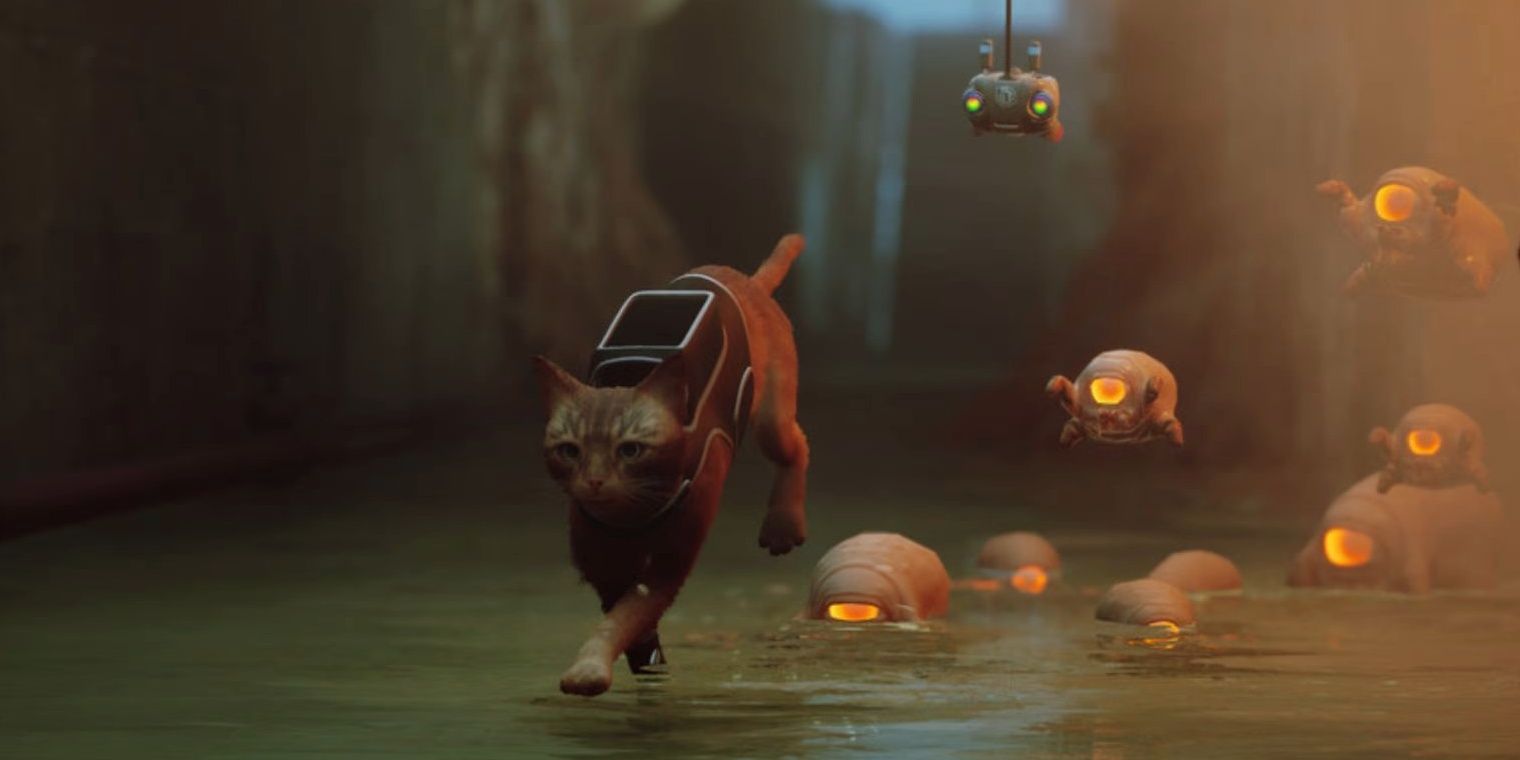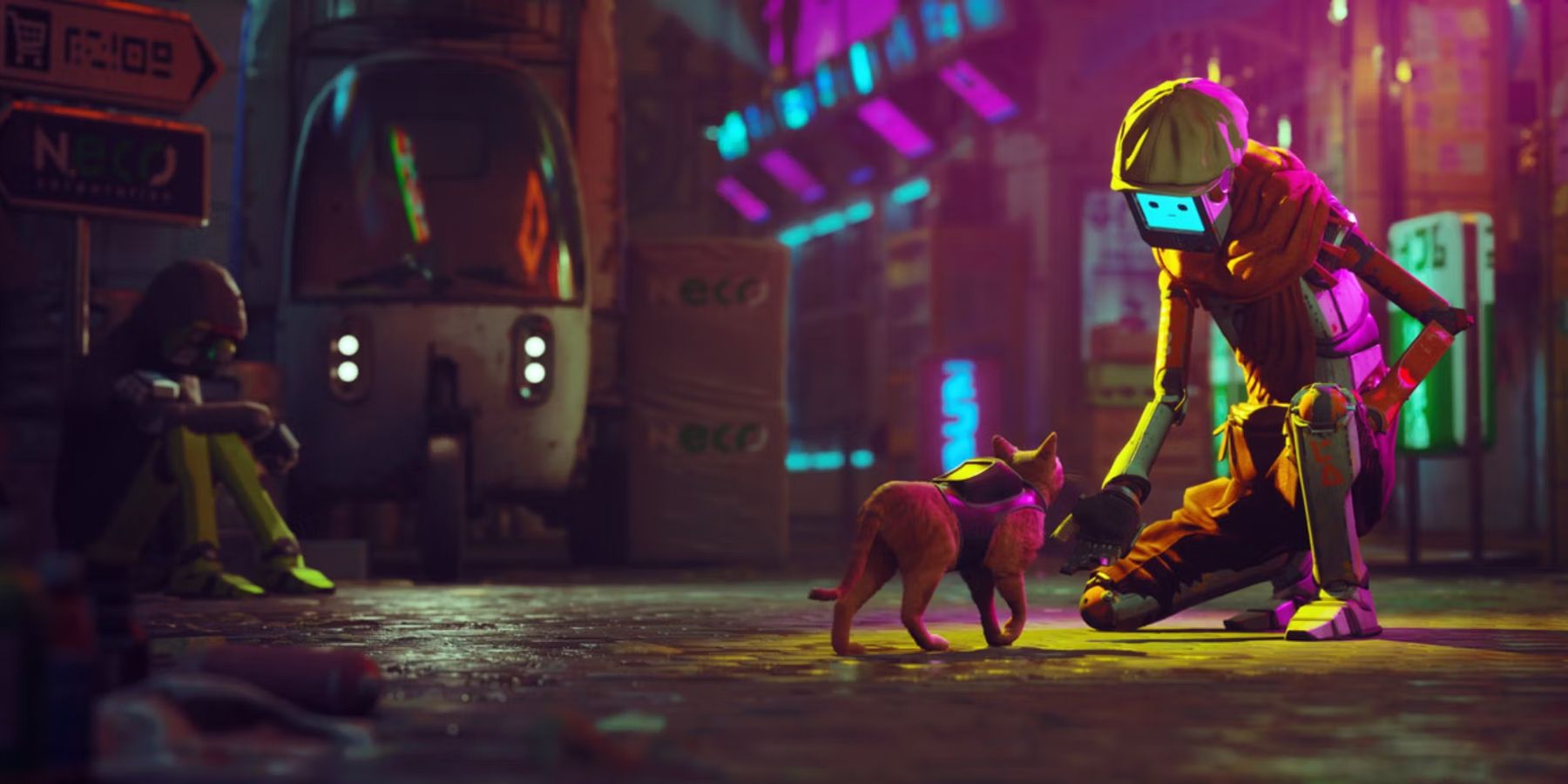
Stray is set in a complex post-cyberpunk world where you control a cat living far from home, exploring beautifully designed environments using special cat powers and helping various characters you meet along the way. The gameplay is a narrative-driven experience that serves primarily as a story vehicle, encouraging exploration for its own sake as the cat journeys into the depths of the smog-filled Walled City 99.
Throughout Stray’s story, there are references to the mysterious disappearance of humanity and how their technology and achievements have had a major impact on the lives of those who survived. The game approaches the story at a leisurely pace, offering tidbits of information bit by bit, and methodically building up an overall narrative. However, very little is said about the characters at the beginning, with attention focused mainly on the companions.
How Are The Companions Connected?

The Fellowship is a race of robotic humanoids originally created to serve humanity. They possess varying degrees of artificial and emotional intelligence, some capable of performing complex tasks such as computer work, while others barely understand the concept of emotion itself. They reside on different levels of the Walled City 99, which became a self-governing community after the disappearance of their human creators. They generally hold people in high regard and admire technological ingenuity.
Companions can experience a range of emotions based on the on-screen emoji representation that becomes their face. They primarily refer to humans as their “kind ancestors” and believe they are descended from humanity itself. This is primarily due to different social and biological aspects of the Companions’ personalities, such as inherited notions of “social class” and pathologies such as hypochondria. They are said to have evolved from “simple arts” that people expressed as essential in desperate times.
They repeatedly mention a place called “Outside”, where supposedly people still live and where no one has ever been before. A group called the “Outsiders” is on a mission to reach the upper levels and invade the outside to see if humanity still exists; however, many of the Fellowship are content with life in the slums and have no desire to leave.
The cliché of a race of robot slaves rising up and overthrowing their inferior human overlords is a common story thread, but conflict between the Fellowship and humans is never mentioned, and the robots don’t seem to have any negative impact on the fate of humanity, as they had.
What Was Responsible For Ending Humanity?

At first glance, Stray’s enemies seem to be the ravenous Zulks. A race of genetically modified bacteria, the Zulks were originally created by humans to feed on bio-organic waste, but evolved to be able to eat anything, including metal objects. That’s why they are deadly to their robotic companions, and the Zulks are considered the most dangerous enemies of their race. Just like in nature, they swarm and you will experience many chases where you will have to escape from hordes of angry Zulks, but so far only one weakness has been discovered: exposure to strong light.
At the start of the game, you are somehow led to believe that the Zulks could be the cause of humanity’s extinction, but as time goes on, the story unfolds, you will see that the Zulks only exist in the deepest parts of the walled city and have a direct impact on them. For them, sunlight is deadly, meaning that there is no way they could cause the extinction of humanity on earth.
The last known survivor is B-12, albeit in android form. His human consciousness is that of a former scientist, and much of the game hinges on the player recovering his lost memories. Through B-12, you will learn a lot about the Stray lore, and how humanity was ultimately wiped out. In the final chapter of Stray, B-12 regains his full memory, revealing that humanity was wiped out by an unnamed plague. Despite creating the Walled City 99, no humans managed to make it to the Exclusion Zone in time. B-12 reveals that in a last-ditch effort, he downloaded his mind into a computer and lived in solitude for years until they came along and allowed him to enter. Becoming a droid.
Due to technological advances and the existence of the walled city 99 itself, it is safe to assume that people have known about the plague for a long time and have tried various methods of isolation and containment to survive. It is unknown why humans did not reach the city before their downfall, or if there are surviving people in other similar locations. Because of this, it cannot be said that humanity is exactly extinct, as many of the characters we meet in Stray have very limited knowledge of the outside world, and we are never given any information about the world situation, only what B-12 remembers before he was digitized.
How Did The Cats Survive In Stray?

Not much is said about the survival of life on earth, but it is safe to assume that the unknown plague that wiped out humanity could not possibly affect cats. At the start of the game, you live with various other fellow cats, and we can assume that cats have continued to survive in the outside world, possibly alongside other animals, thanks to their species’ ingenuity.
At the end of the game, you escape from the walled city 99 and return to the outside world, but the serene imagery and setting do not show any of the dangers or threats that cats would fear. Although the loss of B-12 is mourned, the accomplishment of the mission set forth by both the Outsider and the Cat is presented as a happy ending, and despite the flickering electronic sounds on the walls in the final film, perhaps hinting at the future, Stray’s story is not about an apocalyptic dark world, as the sequels suggest, but rather a message of hope and friendship.

Leave a Reply